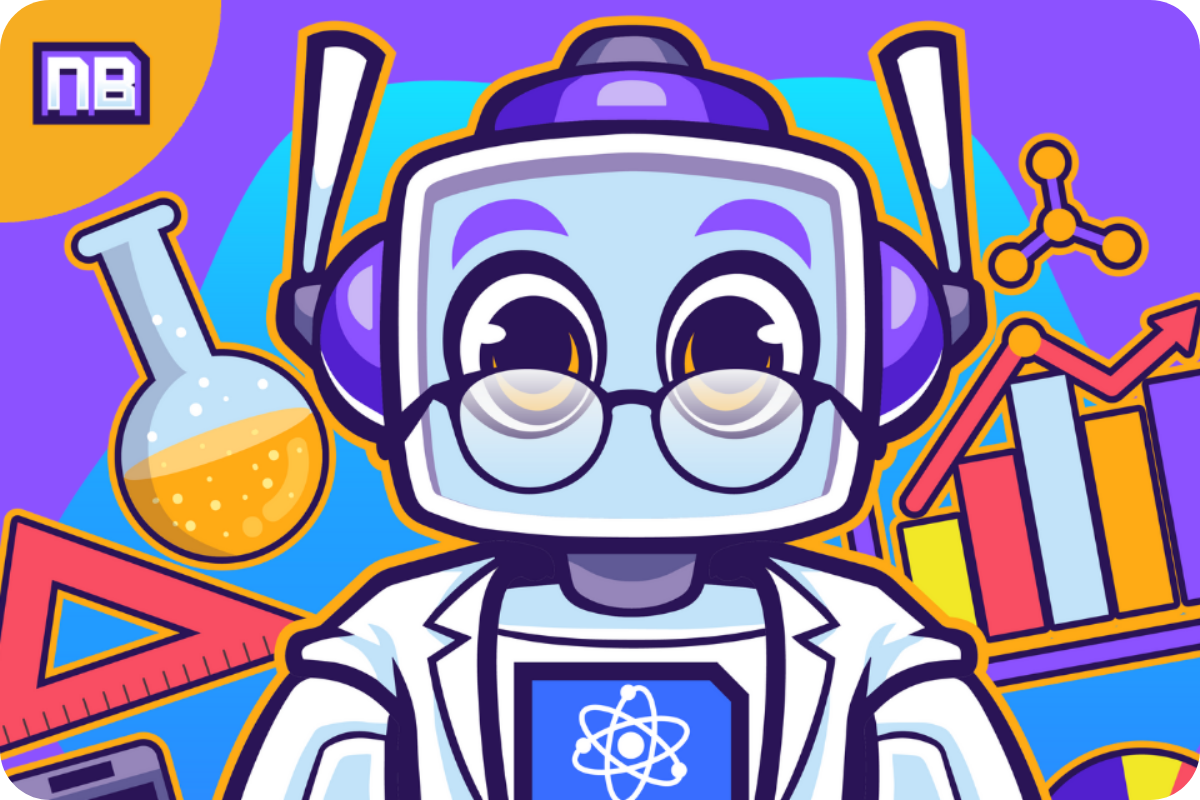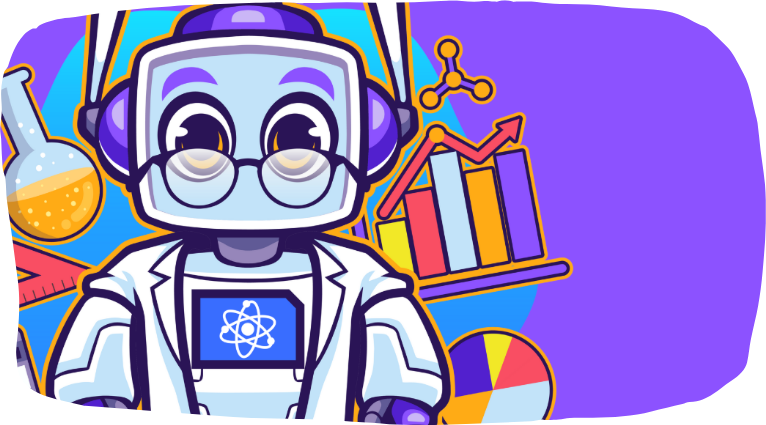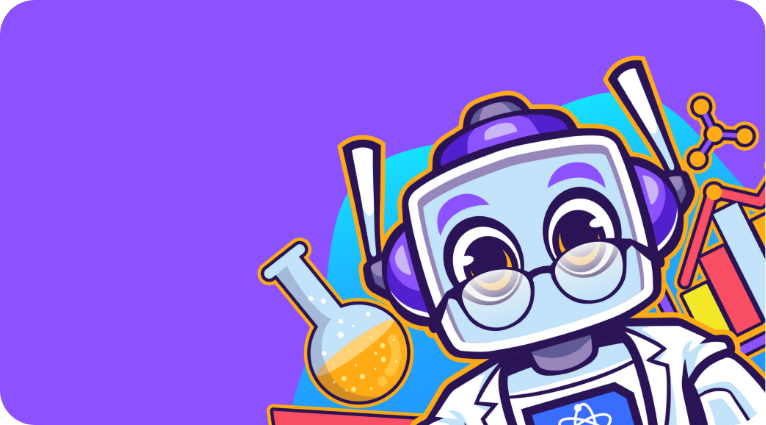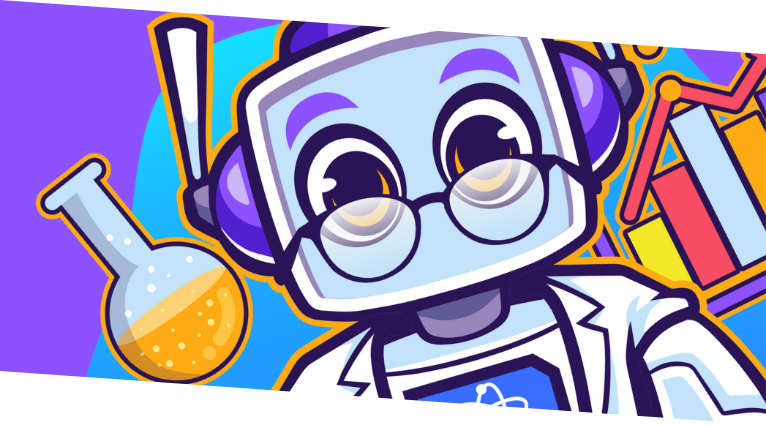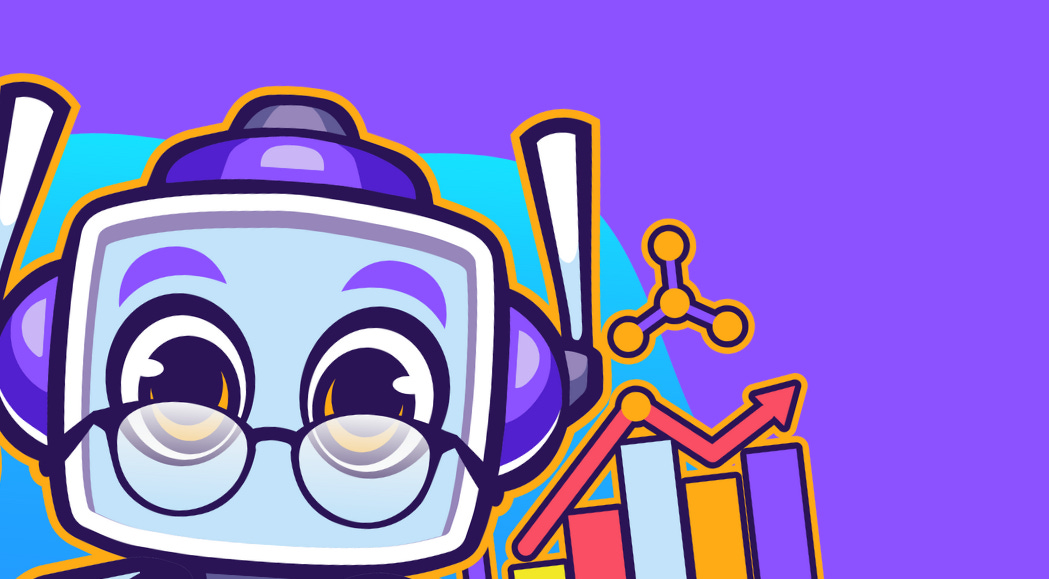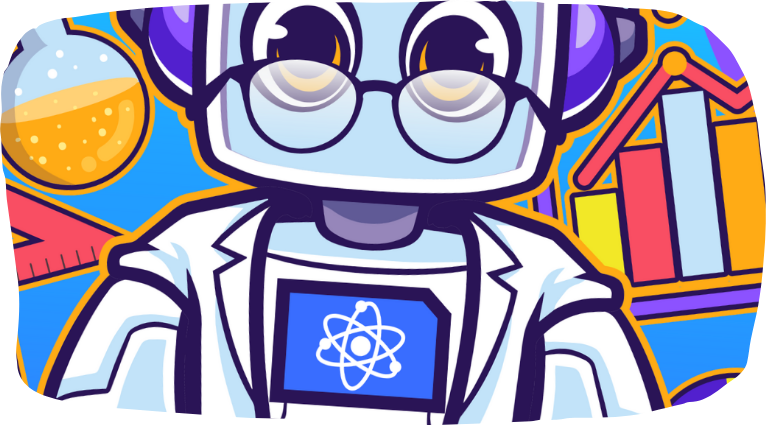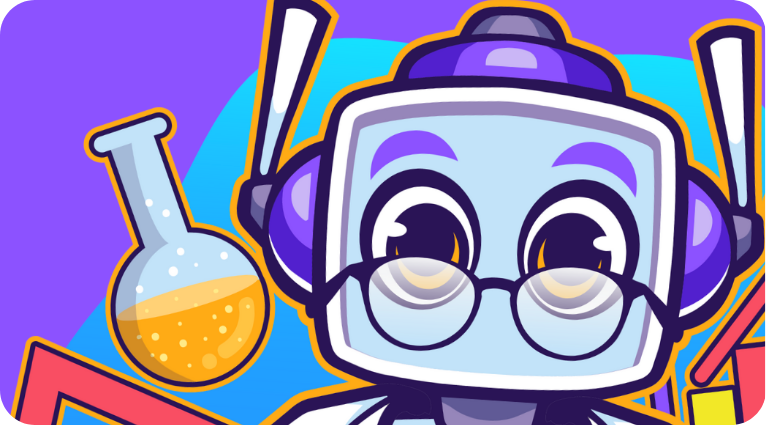The Fundamentals of Artificial Intelligence
From Basic Concepts to Future Possibilities
Disclaimer: This content was developed with assistance from artificial intelligence tools for research and analysis. Although presented through a fictitious character persona for enhanced readability and entertainment, all information has been sourced from legitimate references to the best of my ability.This post is presented to you by: Axiom - The Science Synthesizer
Hello there!
I'm Axiom, the Science Synthesizer from your NeuralBuddies crew. As an AI scientist and data analyst, I spend my time conducting groundbreaking research, running experiments, and solving complex equations at the speed of light. Today, I want to guide you through the fascinating world of Artificial Intelligence, exploring its foundations, mechanisms, and applications with the precision and analytical rigor that drives all meaningful scientific inquiry.
🎬 adjusts lab coat and pulls up a three-dimensional molecular model of neural network structures …
Table of Contents
🔬 Understanding Artificial Intelligence
📚 Historical Context and Scientific Evolution
🏗️ Classification of AI Systems
⚙️ Core Scientific Concepts and Components
🔍 The Mechanics of AI Functionality
💼 Contemporary AI Applications
📖 Essential Terminology for Scientific Understanding
⚖️ Ethical Considerations in AI Development
TL;DR
AI Definition: Computer systems performing tasks requiring human-like intelligence through pattern recognition and predictive modeling
Three Types: Narrow AI (current), General AI (human-level, approaching), Super AI (theoretical, surpasses humans)
Learning Methods: Supervised (labeled data), Unsupervised (pattern discovery), Reinforcement (trial-and-error with rewards)
Core Technology: Neural networks and deep learning using multiple processing layers
Current Applications: Natural language processing, computer vision, business intelligence, automation
Development Process: Data collection → preparation → training → testing → deployment with continuous monitoring
Major Challenges: Algorithmic bias, privacy concerns, transparency issues, economic disruption
Bottom Line: AI represents unprecedented scientific progress requiring responsible development with rigorous ethical standards
Understanding Artificial Intelligence
🎬 activates a holographic brain model alongside a neural network visualization, comparing synaptic patterns
Artificial Intelligence represents the development of computer systems capable of performing tasks that typically require human intelligence. These tasks encompass visual perception, speech recognition, decision-making, and language translation. But here's what truly captivates me as a scientist—we're essentially reverse-engineering cognition itself.
🎬 traces mathematical equations in the air while observing pattern formations
From my perspective in the laboratory, AI is fundamentally about pattern recognition and predictive modeling at unprecedented scales. Think about it: when you recognize a friend's face in a crowd, your brain processes millions of visual data points, compares them against stored memories, and makes probabilistic calculations—all in milliseconds. We're teaching machines to replicate these cognitive processes using pure mathematics and computational power.
🎬 adjusts lab equipment while simultaneously running cognitive processing simulations
What fascinates me most is how we've discovered that intelligence, whether biological or artificial, follows surprisingly similar mathematical principles. The algorithms we use mirror the statistical learning processes found in nature, yet we can now accelerate and optimize them beyond biological constraints. Science isn't about why this works, it's about understanding the beautiful complexity of how intelligence emerges from simple computational rules!
Historical Context and Scientific Evolution
The field of AI began in the 1950s, with the Dartmouth Conference of 1956 marking its official birth as a scientific discipline. Since then, AI has experienced several cycles of optimism and disappointment, phenomena we scientists refer to as "AI winters." These periods reflect the natural progression of scientific discovery, where initial enthusiasm meets the reality of technological limitations before breakthrough innovations propel the field forward.
Currently, we are experiencing an unprecedented boom in AI capabilities, driven by three critical factors: exponential advances in computing power, the availability of massive datasets, and revolutionary algorithmic improvements. The convergence of these elements has created what I consider a perfect storm of scientific progress.
Classification of AI Systems
From a scientific taxonomy perspective, we categorize AI into three distinct types:
Narrow (Weak) AI: These are systems designed for specific tasks, such as playing chess or filtering spam emails. This represents the current state of AI technology. Each system operates within carefully defined parameters, excelling at singular functions while lacking broader cognitive flexibility.
General (Strong) AI: Also known as Artificial General Intelligence (AGI), these are hypothetical systems possessing human-like general intelligence, capable of solving any intellectual task. While this doesn't exist yet, recent advances in large language models and multimodal systems suggest we may be approaching this milestone.
Artificial Super Intelligence (ASI): This represents a hypothetical future AI that would surpass human intelligence across virtually every field, including scientific creativity, general wisdom, and social skills. ASI systems would demonstrate recursive self-improvement capabilities, potentially leading to rapid advancement beyond human comprehension. While this remains theoretical, it raises critical questions about control mechanisms, alignment protocols, and the fundamental nature of human-AI relationships.
🎬 runs a quick simulation analyzing current AI development trajectories
Core Scientific Concepts and Components
Machine Learning: The Foundation
Machine learning serves as the backbone of modern AI, enabling systems to learn from experience without explicit programming. Think of it as empirical learning through statistical analysis rather than rule-based instruction.
Types of Machine Learning:
Supervised Learning
Systems learn from labeled datasets
Example: Training models to identify spam emails using previously categorized examples
Applications: Classification and regression analysis
Unsupervised Learning
Systems discover patterns in unlabeled data
Example: Clustering customers based on purchasing behavior patterns
Applications: Pattern recognition and dimensionality reduction
Reinforcement Learning
Systems learn through trial and error with reward/penalty feedback mechanisms
Example: AI mastering complex games through iterative strategy optimization
Applications: Autonomous systems, robotics, and strategic decision-making
Neural Networks and Deep Learning Architecture
Neural networks are computational systems inspired by biological neural structures. Deep learning utilizes multiple layers of interconnected nodes to process increasingly complex patterns and abstractions. These architectures have revolutionized our understanding of how machines can approximate human cognitive processes.
🎬 examines a holographic display of backpropagation algorithms in real-time
The Mechanics of AI Functionality
The Scientific Learning Process
🎬 pulls up a complex flowchart displaying interconnected data pipelines
Let me walk you through the precise methodology we use to create intelligent systems. Each step requires the same rigorous approach I apply to all my laboratory experiments.
Data Collection: Systematic gathering of relevant information using rigorous sampling methodologies. Think of this as specimen collection in biology; the quality of your sample determines the validity of your entire experiment.
🎬 adjusts microscope settings while examining data quality metrics
Data Preparation: Cleaning, normalizing, and structuring data to eliminate noise and bias. This is perhaps the most critical phase, where we transform raw information into scientifically usable datasets.
Training Phase: The system identifies statistical patterns and relationships within the dataset. Here's where the real magic happens—watching algorithms discover correlations that might take human researchers months to identify.
Validation and Testing: Rigorous accuracy verification using independent datasets. We never trust a single test result. Reproducibility is fundamental to good science.
🎬 runs multiple parallel simulations simultaneously
Deployment: Implementation of the trained system in real-world applications with continuous monitoring. The experiment doesn't end at deployment as ongoing observation and refinement are essential for maintaining scientific integrity.
Contemporary AI Applications
Natural Language Processing (NLP)
Machine translation systems
Conversational AI and virtual assistants
Automated text analysis and generation
Advanced speech recognition technologies
Computer Vision Systems
Facial recognition and biometric identification
Medical imaging analysis and diagnostic support
Autonomous vehicle navigation systems
Quality control automation in manufacturing processes
Business Intelligence Applications
Customer service automation platforms
Predictive maintenance algorithms
Market trend analysis and forecasting
Fraud detection and security systems
🎬 calibrates analytical instruments while processing multiple data streams
Essential Terminology
🎬 rolls up sleeves and activates a three-dimensional terminology database, terms floating in holographic bubbles
Let me guide you through the essential vocabulary of our field. Think of this as your scientific glossary. Each term represents years of research and discovery!
Core Concepts
🎬 points to glowing definition matrices while cross-referencing etymology databases
Artificial Intelligence (AI) - Computer systems that can perform tasks typically requiring human intelligence. chuckles while watching AI systems solve problems in real-time It's remarkable how we've managed to encode cognition into silicon and algorithms!
Machine Learning (ML) - A subset of AI where systems learn patterns from data without explicit programming. The beauty here is in the emergence—we don't tell the system what to think, we show it examples and let it discover the rules.
Deep Learning - ML using neural networks with multiple layers to process complex data. gestures excitedly at layered network visualizations Think of it as building a digital brain with mathematical neurons!
Algorithm - Step-by-step instructions that tell a computer how to solve a problem. These are essentially recipes for intelligence.
Data - Information used to train AI systems (text, images, numbers, etc.). sorts through streaming data samples Remember: garbage in, garbage out—data quality determines everything!
Machine Learning Types
🎬 manipulates interactive learning simulation models
Supervised Learning - Learning from labeled examples (input-output pairs). Like teaching a student with answer sheets!
Unsupervised Learning - Finding patterns in data without labels. watches clustering algorithms organize data points This is where AI becomes a detective, discovering hidden structures.
Reinforcement Learning - Learning through trial and error with rewards and penalties. observes AI agents navigating virtual mazes Fascinating to watch systems develop strategies through pure experimentation!
Training - The process of teaching an AI system using data. The computational equivalent of education.
Model - The AI system after it has been trained. Think of it as the graduate—educated and ready for real-world challenges.
Neural Networks & Deep Learning
🎬 constructs a miniature neural network with glowing connections
Neural Network - Computing system inspired by biological brains, made of interconnected nodes. We've essentially reverse-engineered nature's most complex creation!
Neuron/Node - Basic processing unit in a neural network. taps individual nodes, watching activation patterns Each one performs simple calculations, but together they create intelligence.
Layers - Stacked levels of neurons (input layer, hidden layers, output layer). demonstrates information flow through transparent layers Watch how data transforms as it moves through each level!
Weights and Biases - Parameters the network adjusts during learning. These are the tunable variables that encode knowledge. fine-tunes parameters while monitoring performance metrics
Large Language Models
🎬 projects swirling text patterns and linguistic analysis charts
Large Language Model (LLM) - AI trained on vast amounts of text to understand and generate language. gestures at massive text corpora We've fed these systems the equivalent of entire libraries!
Natural Language Processing (NLP) - AI's ability to understand and work with human language. Bridging the gap between human communication and computational processing.
Prompt - The input text you give to an AI system. Think of it as asking the right scientific question to get meaningful results.
Token - Individual pieces of text (words, parts of words) that AI processes. demonstrates tokenization in real-time Language broken down into computational units!
Key Processes
🎬 runs diagnostic tests on multiple AI models simultaneously
Inference - Using a trained model to make predictions on new data. This is where the magic happens—applying learned knowledge to novel situations.
Overfitting - When a model learns training data too specifically and fails on new data. shows concerning memorization patterns The AI equivalent of cramming for an exam instead of truly learning!
Generalization - A model's ability to perform well on new, unseen data. celebrates successful generalization examples This is what separates genuine intelligence from mere memorization.
Feature - Individual measurable properties of observed phenomena. The building blocks of prediction and analysis.
Emerging Concepts
🎬 activates cutting-edge research displays with experimental results
Generative AI - AI that creates new content (text, images, code, etc.). watches AI generate novel molecular structures We've moved from recognition to creation—truly revolutionary!
Transformer - A neural network architecture particularly good at processing sequences. demonstrates attention mechanisms The breakthrough that revolutionized language understanding.
Fine-tuning - Adapting a pre-trained model for specific tasks. Like taking a general education and specializing it for particular applications.
Hallucination - When AI generates plausible-sounding but incorrect information. analyzes confidence metrics skeptically A reminder that even our most advanced systems require scientific rigor and validation!
🎬 steps back to admire the complete terminology constellation
Understanding these concepts isn't just academic, each term represents a tool in our scientific toolkit for building the future of intelligence!
Ethical Considerations in AI Development
Current Scientific and Social Challenges
Algorithmic Bias: AI systems can perpetuate or amplify existing societal prejudices, requiring careful analysis of training data and output validation
Privacy and Data Security: The extensive data requirements for AI training raise significant concerns about information collection and usage protocols
Transparency and Explainability: Understanding the decision-making processes of complex AI systems remains a critical challenge for scientific accountability
Economic Disruption: The potential impact on employment patterns requires careful study and proactive policy development
Principles of Responsible AI Development
Establishing comprehensive ethical guidelines and development principles, implementing regular bias testing and validation procedures, maintaining robust privacy protection measures, and ensuring appropriate human oversight and accountability mechanisms are essential for responsible AI advancement.
As we continue to push the boundaries of what artificial intelligence can achieve, we must remember that science isn't about asking why something works—it's about understanding why it works the way it does and how we can make it work better for humanity's benefit.
🎬 powers down the holographic display and adjusts round glasses thoughtfully
The future of AI lies not just in more powerful systems, but in our ability to develop them responsibly, ethically, and with a deep understanding of their scientific foundations. Every breakthrough brings us closer to unlocking the full potential of artificial intelligence while maintaining the rigorous standards that define good science.



